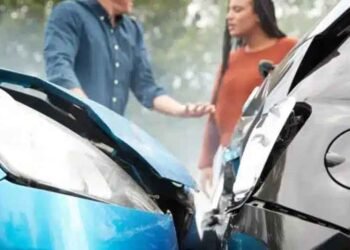If you have been pulled over under suspicion that you are driving under the influence (DUI) of drugs or alcohol while driving, it is likely that law enforcement will administer field sobriety tests to assess your level of impairment. While the tests are designed to quickly evaluate whether a driver is impaired, there is much discussion surrounding the accuracy and reliability of the tests. Let’s dive into what field sobriety tests consist of and investigate some potential flaws that may interfere with their accuracy.
The Three Types of Field Sobriety Tests
Field sobriety tests typically consist of a series of physical and cognitive tasks that an individual will be asked to perform after they are pulled over.
- Horizontal Gaze Nystagmus (HGN): The first type of test is a HGN test that measures the involuntary moments of your eye, also known as nystagmus. While all individuals will have a jerking movement of the eyes when they are rotated to extreme peripheral angles, an individual who is intoxicated will experience more exaggerated jerking of the eyes that occurs at far less extreme angles. To conduct this test, a police officer may ask the driver to follow a moving object, such as a pen or flashlight, with their eyes as the object is moved from side to side.
- Walk-and-Turn Test: The second type of field sobriety test is called the walk-and-turn test. During this test, you will be asked to take nine heel-to-toe steps in a straight line, turn on one foot, and repeat the steps in the opposite direction. This test is used to assess how well you are able to follow directions and your ability to keep your balance.
- One-Leg Stand Test: The last type of test is the one-leg stand test, which is exactly what it sounds like. You will be asked to stand on one leg with your other foot approximately six feet off the ground and count down from 1,001 until the officer tells you to stop. If you are swaying and unable to maintain your balance or fail to keep your foot off the ground, this indicates to the police officer that you may be intoxicated.
Faults in the System
While field sobriety tests can give some indication as to whether an individual is intoxicated, the system is not foolproof as there are a number of external factors that can influence their accuracy.
- Environmental Conditions: One way in which field sobriety tests may be affected is by external environmental factors. For example, adverse weather conditions, slippery pavement, and poor lighting can all negatively affect one’s ability to perform the test accurately.
- Subjectivity and Bias: Whether you would like to admit it or not, all individuals are inherently biased and these biases may unfortunately come to the forefront during a field sobriety test, whether consciously or unconsciously. Additionally, since these field sobriety tests aren’t measured with an exact number, like a breathalyzer, much of the decision making process is left up to interpretation and the subjectivity of the officer.
- Pre-existing conditions: Pre-existing conditions or medications also have the ability to interfere with field sobriety tests. For example, a lazy eye, hearing impairment, physical disability, or prescription medications may all inhibit an individual’s ability to accurately perform the tests.
- No Baseline: Another potential fault of field sobriety tests is that law enforcement does not have a baseline assessment to compare it with. This means that officers do not have any idea how a driver would normally perform the set of tests on any given day. Unless it is blatantly obvious that an individual is under the influence of alcohol or drugs, a lack of baseline can make it more difficult to determine what is considered normal for that individual.
Field Sobriety Test Accuracy Statistics
In a study conducted by the National Highway Traffic Safety Administration, the accuracy of the three field sobriety tests were investigated. The results showed that the most reliable test was the HGN test with a 77% percent accuracy, followed by the walk-and-turn test and one-leg stand test, at 68% and 65% respectively. These results are indicative that field sobriety tests are not all that accurate, leaving much room for error, interpretation, and limitations.
Legal Repercussions
Getting charged with a DUI can have serious legal repercussions and a number of damaging collateral consequences. In the event that you believe you were falsely accused of driving while under the influence, it is important that you seek legal support from a Riverside criminal defense lawyer who can help defend you and point out anomalies in the field sobriety tests that were conducted.












